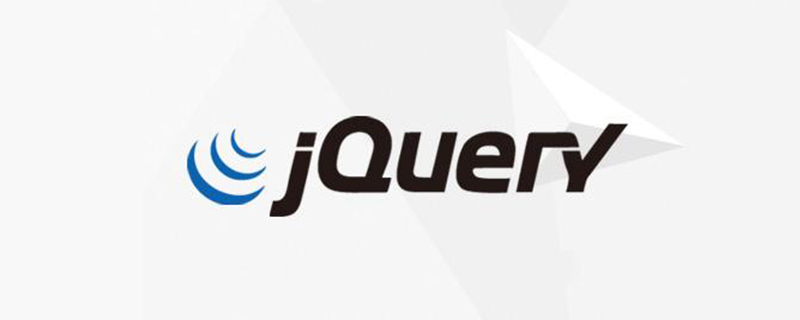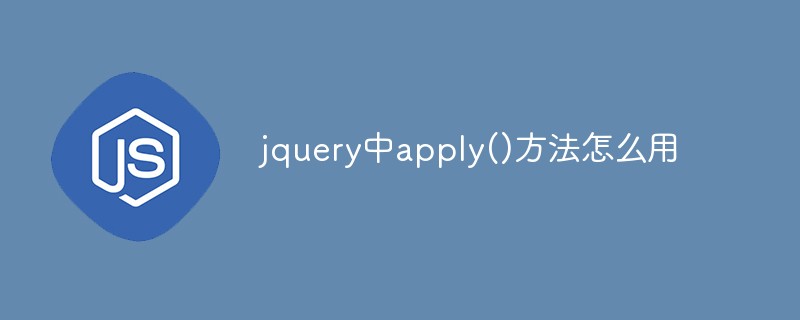(function ($) {
//code in here
})(jQuery);
This is the official plug-in development specification requirement from jQuery, use this What are the benefits of this way of writing?
a) Avoid global dependencies.
b) Avoid third-party sabotage.
c) Compatible with jQuery operator '$' and 'jQuery '
Second, with the closure, add the skeleton of the plug-in
$.fn.dBox = function (options) {
var defaults = {
//Various attributes and their default values
};
var opts = $.extend(defaults, options);
//function codes in here
};
Here dBox is my name for this pop-up layer plug-in
Third, establish the properties and their default values for dBox
$.fn.dBox = function (options) {
var defaults = {
opacity : 0.6, //for mask layer
drag: true,
title: 'dBox',
content: '',
left: 400,
top: 200,
width : 600,
height: 300,
setPos: false, //if use the customer's left and top
overlay: true, //if use the mask layer
loadStr: 'Loading',
ajaxSrc: '',
iframeSrc: ''
};
var opts = $.extend(defaults, options);
//function codes in here
};
Fourth, since it is a pop-up form, you must first design a div form and mask layer . Here I also write the style directly in the function codes area. Input as follows:
//build html code of the dBox
var dBoxHtml = "
dBoxHtml = "
dBoxHtml = "
dBoxHtml = "
dBoxHtml = "
dBoxHtml = "< ;div id='d_content' style='width:100%;height:100%;padding:3px;'>" opts.content "
dBoxHtml = "
var dBoxBG = "
The last return false can remove the browser's default click event. For example, binding a click event to an a tag will not cause the default jump effect.
In this click event, first bind the dBox frame The page is loaded, and then the loading method of the content is determined and processed separately. Finally, there are three events
1, addCSS() this event handles the mask layer size, the position of the pop-up layer
2, drag() this event handles Dragging of the pop-up layer
3, dBoxRemove() This event handles the closing of the pop-up layer
With these three events, the entire plug-in is basically completed
Six, posted here as above Codes for three events
1, addCSS():
//add css to the dBox
function addCSS() {
var pos = setPosition();
$("#dBox").css({ "left": pos[ 0], "top": pos[1], "width": opts.width "px", "height": opts.height "px" });
if (opts.overlay) {
var wh = getPageSize();
$(dBoxBG).appendTo("body").css({ "opacity": opts.opacity, "width": wh[0], "height": wh[1] } );
}
}
In this addCSS, there are two more functions to be implemented, the following code:
//calc the size of the page to put the mask layer cover the whole document
function getPageSize() {
if ($(window).height() > $(document).height()) {
h = $(window).height();
} else {
h = $( document).height();
}
w = $(window).width();
return Array(w, h);
}
//calc the position of the dBox to put the dBox in the center of current window
function setPosition() {
if (opts.setPos) {
l = opts.left;
t = opts.top;
} else {
var w = opts.width;
var h = opts.height;
var width = $(document).width();
var height = $(window).height ();
var left = $(document).scrollLeft();
var top = $(document).scrollTop();
var t = top (height / 2) - (h / 2 );
var l = left (width / 2) - (w / 2);
}
return Array(l, t);
}
2, drag():
/ /drag the dBox
//this event contains four events(handle.mousedown,move,out,up)
function drag() {
var dx, dy, moveout;
var handle = $ ("#dBox").find("#d_head>#d_title").css('cursor', 'move');
handle.mousedown(function (e) {
//cal the distance between e and dBox
dx = e.clientX - parseInt($("#dBox").css("left"));
dy = e.clientY - parseInt($("#dBox").css ("top"));
//bind mousemove event and mouseout event to the dBox
$("#dBox").mousemove(move).mouseout(out).css({ "opacity": opts .opacity });
handle.mouseup(up);
});
move = function (e) {
moveout = false;
win = $(window);
var x, y;
if (e.clientX - dx x = 0;
} else {
if (e.clientX - dx > (win.width () - $("#dBox").width())) {
x = win.width() - $("#dBox").width();
} else {
x = e.clientX - dx;
}
}
if (e.clientY - dy y = 0;
} else {
y = e. clientY - dy;
}
$("#dBox").css({
left: x,
top: y
});
}
out = function (e) {
moveout = true;
setTimeout(function () {
moveout && up(e);
}, 10);
}
up = function ( e) {
$("#dBox").unbind("mousemove", move).unbind("mouseout", out).css("opacity", 1);
handle.unbind("mouseup ", up);
}
}
3, dBoxRemove():
//close the dBox
function dBoxRemove() {
if ($("#dBox")) {
$ ("#dBox").stop().fadeOut(200, function () {
$("#dBox").remove();
if (opts.overlay) {
$(" #d_bg").remove();
$("#d_iframebg").remove();
}
});
}
}
At this point, the plug-in production is basically completed, but the loading thing has not been added. . .
I also found that in IE6, the height and width of the pop-up iframe are a little less, and when there is a mask layer, the movement is not smooth
Any other issues are welcome to discuss!
Online demo addresshttp://demo.jb51.net/js/dBox/dBox.htm
Package download addresshttp://xiazai.jb51.net/201004/ yuanma/dBox.rar
 jquery实现多少秒后隐藏图片Apr 20, 2022 pm 05:33 PM
jquery实现多少秒后隐藏图片Apr 20, 2022 pm 05:33 PM实现方法:1、用“$("img").delay(毫秒数).fadeOut()”语句,delay()设置延迟秒数;2、用“setTimeout(function(){ $("img").hide(); },毫秒值);”语句,通过定时器来延迟。
 jquery怎么修改min-height样式Apr 20, 2022 pm 12:19 PM
jquery怎么修改min-height样式Apr 20, 2022 pm 12:19 PM修改方法:1、用css()设置新样式,语法“$(元素).css("min-height","新值")”;2、用attr(),通过设置style属性来添加新样式,语法“$(元素).attr("style","min-height:新值")”。
 axios与jquery的区别是什么Apr 20, 2022 pm 06:18 PM
axios与jquery的区别是什么Apr 20, 2022 pm 06:18 PM区别:1、axios是一个异步请求框架,用于封装底层的XMLHttpRequest,而jquery是一个JavaScript库,只是顺便封装了dom操作;2、axios是基于承诺对象的,可以用承诺对象中的方法,而jquery不基于承诺对象。
 jquery怎么在body中增加元素Apr 22, 2022 am 11:13 AM
jquery怎么在body中增加元素Apr 22, 2022 am 11:13 AM增加元素的方法:1、用append(),语法“$("body").append(新元素)”,可向body内部的末尾处增加元素;2、用prepend(),语法“$("body").prepend(新元素)”,可向body内部的开始处增加元素。
 jquery中apply()方法怎么用Apr 24, 2022 pm 05:35 PM
jquery中apply()方法怎么用Apr 24, 2022 pm 05:35 PM在jquery中,apply()方法用于改变this指向,使用另一个对象替换当前对象,是应用某一对象的一个方法,语法为“apply(thisobj,[argarray])”;参数argarray表示的是以数组的形式进行传递。
 jquery怎么删除div内所有子元素Apr 21, 2022 pm 07:08 PM
jquery怎么删除div内所有子元素Apr 21, 2022 pm 07:08 PM删除方法:1、用empty(),语法“$("div").empty();”,可删除所有子节点和内容;2、用children()和remove(),语法“$("div").children().remove();”,只删除子元素,不删除内容。
 jquery怎么去掉只读属性Apr 20, 2022 pm 07:55 PM
jquery怎么去掉只读属性Apr 20, 2022 pm 07:55 PM去掉方法:1、用“$(selector).removeAttr("readonly")”语句删除readonly属性;2、用“$(selector).attr("readonly",false)”将readonly属性的值设置为false。
 jquery on()有几个参数Apr 21, 2022 am 11:29 AM
jquery on()有几个参数Apr 21, 2022 am 11:29 AMon()方法有4个参数:1、第一个参数不可省略,规定要从被选元素添加的一个或多个事件或命名空间;2、第二个参数可省略,规定元素的事件处理程序;3、第三个参数可省略,规定传递到函数的额外数据;4、第四个参数可省略,规定当事件发生时运行的函数。


Hot AI Tools

Undresser.AI Undress
AI-powered app for creating realistic nude photos

AI Clothes Remover
Online AI tool for removing clothes from photos.

Undress AI Tool
Undress images for free

Clothoff.io
AI clothes remover

AI Hentai Generator
Generate AI Hentai for free.

Hot Article

Hot Tools

Atom editor mac version download
The most popular open source editor

mPDF
mPDF is a PHP library that can generate PDF files from UTF-8 encoded HTML. The original author, Ian Back, wrote mPDF to output PDF files "on the fly" from his website and handle different languages. It is slower than original scripts like HTML2FPDF and produces larger files when using Unicode fonts, but supports CSS styles etc. and has a lot of enhancements. Supports almost all languages, including RTL (Arabic and Hebrew) and CJK (Chinese, Japanese and Korean). Supports nested block-level elements (such as P, DIV),

SublimeText3 Linux new version
SublimeText3 Linux latest version

VSCode Windows 64-bit Download
A free and powerful IDE editor launched by Microsoft

ZendStudio 13.5.1 Mac
Powerful PHP integrated development environment






